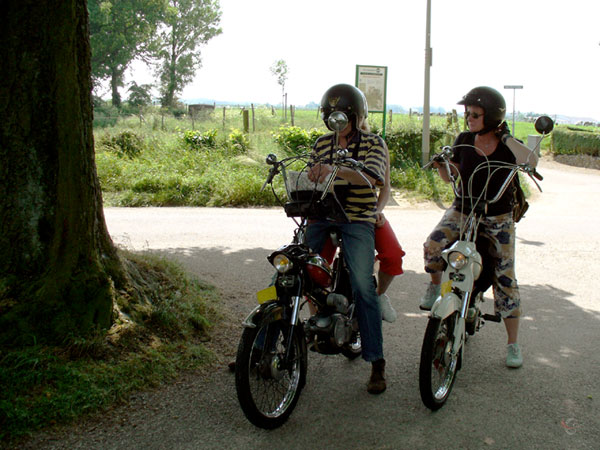
The character of a motorcycle, the way it feels, the way it rides, is determined by a combination of many factors.
Two of those characteristics are torque and power, and these are probably the most important.
Here we try to explain what torque and power mean, and how they infuence the way a motorcycle feels.
![]() Er is een Nederlandse versie:
Er is een Nederlandse versie:
https://www.luiemotorfiets.nl/techniek/koppel/
What does torque mean?

Seesaw
Imagine a seesaw. If the person on one side weighs 200 pounds, and the person on the other side weighs 50 pounds, you have a problem which you can solve, as you probably still know from your life as a toddler: the heavier person has to sit closer to the middle of the seesaw to reach a balance.
The solution tells something about torque: torque is a measure for the force that is applied on a lever,
multiplied with the distance to the rotation point.
Two people on a seesaw are in balance if the torque has the same amount at both sides: the force is
formed by their weight and gravity, and the torque is formed by that force, multplied by the distance
to the middle of the seesaw.
In short: torque (or moment) is force times moment arm.
Pedals on a bicycle
Cycling on a bicycle also has to do with torque.
In this case, the force is the force you apply to the pedal, with your leg muscles.
The rotation point is the axle of the pedal.
The distance is related the distance between the pedal and the axle, but things are
slightly more complicated:
The distance counts for 100% when the pedal points forward, and counts for 0% when the pedal is at the lowest point, or at the highest point.
Torque in a motorcycle
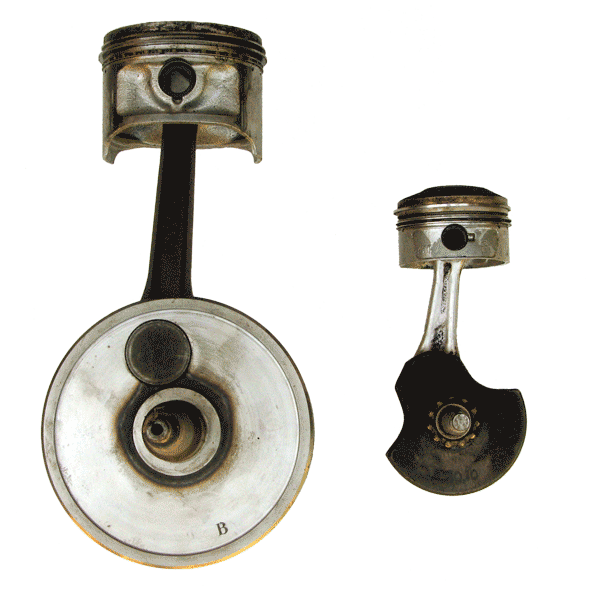
Piston and crank
OK, you say, but where is the torque in a motorbike?
The piston moves up and down, and the force for that comes from the fuel that is burned. Connected to the piston is a rod, the connecting rod, and that rod is connected (with the ability to turn) to the crankshaft.
When you try to compare that system to the bicycle example, you would compare the rotation
point between connecting rod and crankshaft with the bicycle pedal.
The force that you apply to the pedal, with your leg muscles, is comparable with the force that
is applied by the piston on the crank.
The distance between the pedal to the rotation point is comparable to the distance between the
crank and the middle point of the crankshaft, and in the same way as in the bicycle example, the distance
"counts" for 100% when the point of the crank that is connected to the rod
has an angle of 90 degrees with the direction of the piston,
and for 0% when that point is in the highest or the lowest position.
See for instance the
How Stuff Works site.
NewtonMeters
The amount of torque is expressed in Newton meters: Nm. In technical specifications of motorcycles, you often see a number for the maximum torque, and the numer of revolutions per minute at which that torque is delivered (in rpm, revolutions per minute).
Maximum torque
A piston, therefore, delivers a varying amount of torque. The torque at a certain rpm is the average torque that the piston delivers during the revolution stroke. And when your motorcycle has more than one cylinder, the torque of the individual pistons add up.
The rpm where the maximum torque is delivered, is the rpm where the fuel is burned most efficiently: it is at that rpm that the piston delivers the maximum torque on the crank.
The gearbox transmits the rotation of the crank onto (ultimately) the wheels.
Wat does power mean?
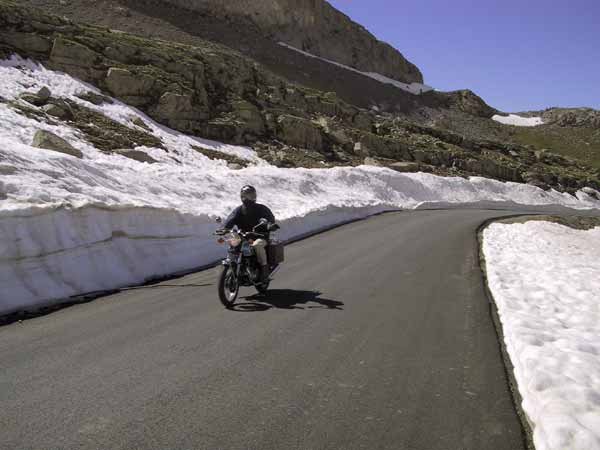
The amount of power tells how fast work can be done. When you walk up the stairs for instance, you deliver work, carrying your own weight up the stairs. How fast you can do that determines your power (in combination with the length of the stairs and your weight: they determine the amount of work).
Power is expressed in kilowatt (Kw) or in Horsepower (Hp).
When you know the torque of your motorcycle with a given rpm, you can deduce the power, by multiplying the torque with the number of revolutions per minute (and of course with a constant factor to adjust the different dimensions like rpm, Hp and Nm).
Torque and power curve
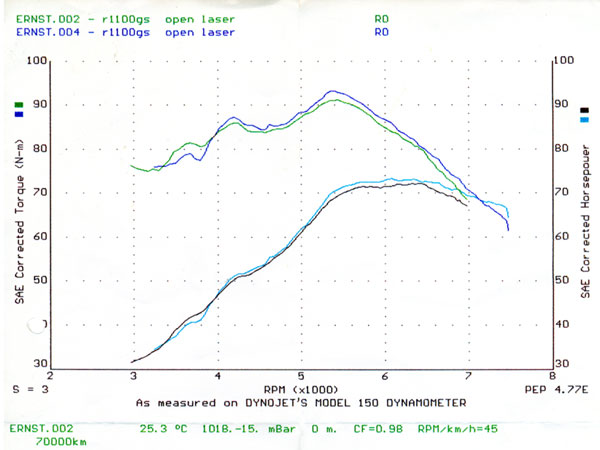
Torque curve
The torque curve shows an x and y axle and a line. The height of that line shows the amount
of torque.
The place on the x-axle shows at which rpm that torque is delivered.
So, from left to right, you see the rpm, and from down to top, you see the torque.
Power curve
In principle, you don't need the power curve when you have the torque curve: it is just
a matter of multiplying. But of course, it is easier when the multplying has been done for you.
In most cases, the multiplying has been done for you, when the technical specifications of a motorcycle
are illustrated with the torque and power curve from measuring in a test.
Where the torque curve is flat, the power curve climbs: with an increasing rpm and a constant torque, the power increases.
Where the torque decreases, the power may still increase, but less than where the torqie curve is flat.
In the end, there will be a point where the power stops (probably where the red area of the rpm is).
OK, but what does it tell me?

What do you need power for?
In fact, for almost everything. Power tells how fast you can work, and a motorcycle works when it accelerates, when it climbs a hill, and even when it rides at a constant speed: the air resistance and all friction (in the motorcycle itself as well) has to be overcome.
So, power tells you how fast a motorcycle can do all those things.
So why show the torque?
The motorcycle delivers power by the combination of torque and rpm. So, when you want to learn something about the character of a motorcycle and you would only look at the power, it is difficult to predict its behavior. You would need the power curve of another motorcycle to compare, because power curves always go up, and in the end collapse.
It is the torque curve that tells you the character of the motorcycle.
Much power, high rpm
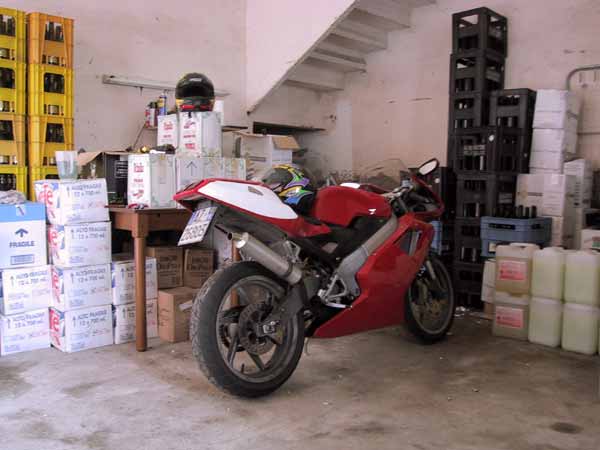
Power from a high rpm
When you want an engine with as much power as possible, you want to tune it in such a way that it delivers its maximum torque with a high rpm. You then have much power: power is, as we have seen, the amount of torque multiplied with the rpm.
The disadvantage is that there is almost no power at low rpm's: so you have to rev the engine constantly to have power.
When you ride such a motorbike, you will have to change gears a lot, to keep the engine in the high rpm's all the time: in the narrow area where there is power.
You will have to use the clutch when accelerating from a standstill: the engine needs a high rpm to be able to do that.
High revs motorcycles
A motorcycle with a low capacity (few cubic inches), and relarively much power, will be a high rev-motorcycle.
Think for instance of the 125's and the 250's two-strokes that you see in motorcycle races.
Within motorcycles for the street, the Aprilia RS250 or the Cagiva Mito are examples of this strategy.
Much torque, low rpm
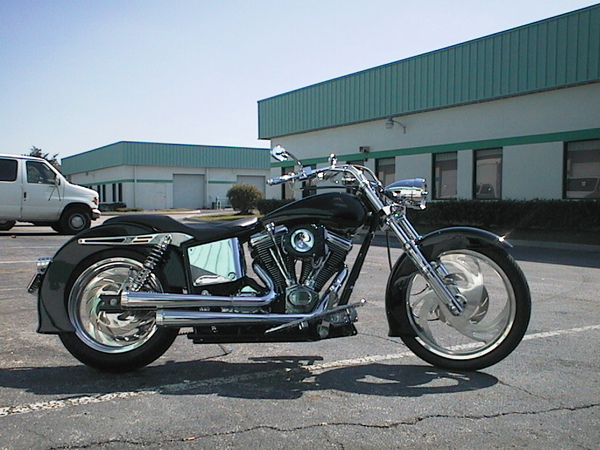
Torque from below
When the maximum torque is delivered at a low number of rpm, you decline power, so to speak: you will never reach the amount of horsepower that can be reached in a high revving engine.
But the advantage is that you have torque, and power, from very low rpm's.
Low revving engine
The classic example of a low revving engine, optimized for torque at low rpm's, is
a Harley Davidson.
Another example is the Yamaha VMax: lots of torque, with very low rpm's.
Motorcycles with this strategy are often motorcycles with a high capacity (many cubic inches): then the torque at low rpm's may be so high that the maximum power is still reasonable, even when power is not what the engine is optimized for.
Torque curve broad and flat

Much power, broad and flat torque curve
For motorcycles on the street, it is convenient when the torque is high in a broad area. In that case, you will be able to open the gas at each rpm, without the need to shift down first. Also, it doesn't matter very much with which gear you enter a corner.
A broad and flat torque curve with plenty of power is only possible with many cubic inches.
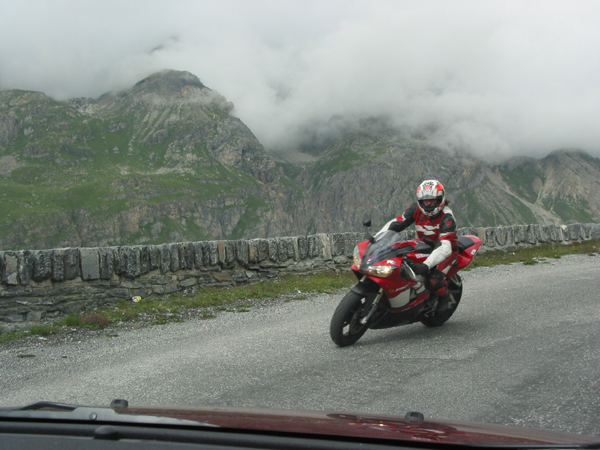
Which motorcycles?
Examples of this strategy are the BMW R-series (though their torque curves rather show a landscape with mountains instead of a high plane), the Yamaha MT-01, and the Yamaha R1. Between the two Yamaha's, you can easily spot the differences: within the R1, the accent is on power, while the MT-01 is more optimized toward torque from below.
So how to choose?

The character of a motorcycle is not determined by the torque and power curve alone, but
they are very important.
You will have to find out, by test riding and comparing, what fits best with you.
In general, for daily use, a motorcycle should preferably have a broad and fairly flat torque
curve, with power available from the lower rpm's: an Aprilia RS250 (almost nothing in the
lower rpm's, much power at high revvs) is not very convenient for daily use.
But if you would like to use your motorcycle for racing, the coice will be very different of course.
Comments, Q & A, on a separate page




